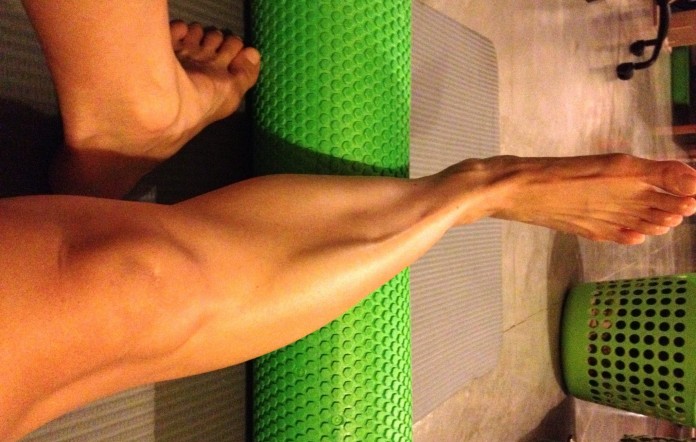Plantar fasciitis – the showstopper for the last two weeks. Only yesterday, I learned how to pronounce it properly. You hear runners rant about the agonizing heel condition but nothing drive home the debilitating pain until you experience it first hand.
Allow me to recount how I got here. In order to improve on my aerobic power and run more efficiently, I had recently incorporated speed work into my training. Mixing it up is all good but in my case, it was too much too soon. The repeated uphill sprint had sent my heart racing but the downside is, it had also exacerbated the already tight calf muscles. Instead of tapering on the side of caution, I chose to shrug it off. How can it be a bad thing if I’m progressing rapidly, right?
Riding on this feeling of invincibility when everything is going well can be counterproductive. The foolhardy me threw everything I know about training smart out of the window. I forfeited the time the body needs to recover from the stress and planted fertile ground for injuries to come knocking.
At the onset, I was still trying to fight through the pain by running shorter distance, and making sure stretching happens before and after a run. Defiantly, the nagging pain refused to budge. Even the most cushioned shoes didn’t feel marshmallow soft.
Google ‘plantar fasciitis’ and a wealth of information on heel pain and treatment options clamor for my attention. In my eagerness to heal at the earliest possible, I tried pretty much all of the following: taking anti-inflammatory drug such as ibuprofen, rolling the arch with a frozen bottle of water, and giving the foot a good rub down. The symptoms alleviated but the pain returned shortly after. In the spirit of experimentation, I followed a YouTube instruction on low dye strapping – a treatment intended to restrict the movement of the foot and allow it to heal. I definitely look the part of an injured runner with my taped up foot, when I picked up the race pack for the upcoming Shape Run – a telltale that I was still in denial.
Progress is slow and for the next few days, I dreaded the mornings when I first get out of slumber. Once an injury surfaces, rest is imminent. Training took a backseat and even the most mundane of activities like sitting at my desk for a prolonged period aggravated the strain. Standing, on the contrary, feels better than sitting. My efforts to speed up the recovery process seemed futile. On days when I’m struggling to cope with the injury, writing becomes laborious. After day five, the pain didn’t completely go away and admittedly, my spirits dampened and I was feeling a tad deflated.
But, I wasn’t ready to concede defeat. Determined to outlast the tenacious pangs of a painful heel, I plough on. I came across Active Release Techniques (ART), a soft tissue massage to relief tissue tension caused typically by overuse or wear and tear. Self-administered, the relief is pretty immediate. Many also swore by foam rolling and calf stretching – both straight legged and bent-knee to target the soleus muscle. After a couple days of conscientious stretching and massaging, the strain on the plantar fascia finally relented. There’s light at the end of this plantar tunnel!
Pain reduction is complex. As I write, I’m not completely out of the woods yet. I know the pain will linger for a bit longer. I don’t profess to know it all and I’m learning as I go along. But, the ordeal forces me to re-evaluate my training routine. Injuries don’t happen in a vacuum; heel pain may be a sign of a larger issue such as musculoskeletal imbalance, postural or biomechanics problems. Likewise, I can attest that when my body is out of sync or out of alignment, it’s a bad idea to rush through recovery or delay the inevitable.
It took an injury to put it all in perspective. Today, after two weeks of hiatus, I completed my second six-kilometer run. Never had a run felt so heartening and humbling at the same time.
FYI, I’ll be posting more photos and videos shortly at www.i-run-bcos-tumblr.com. Stay tuned!


